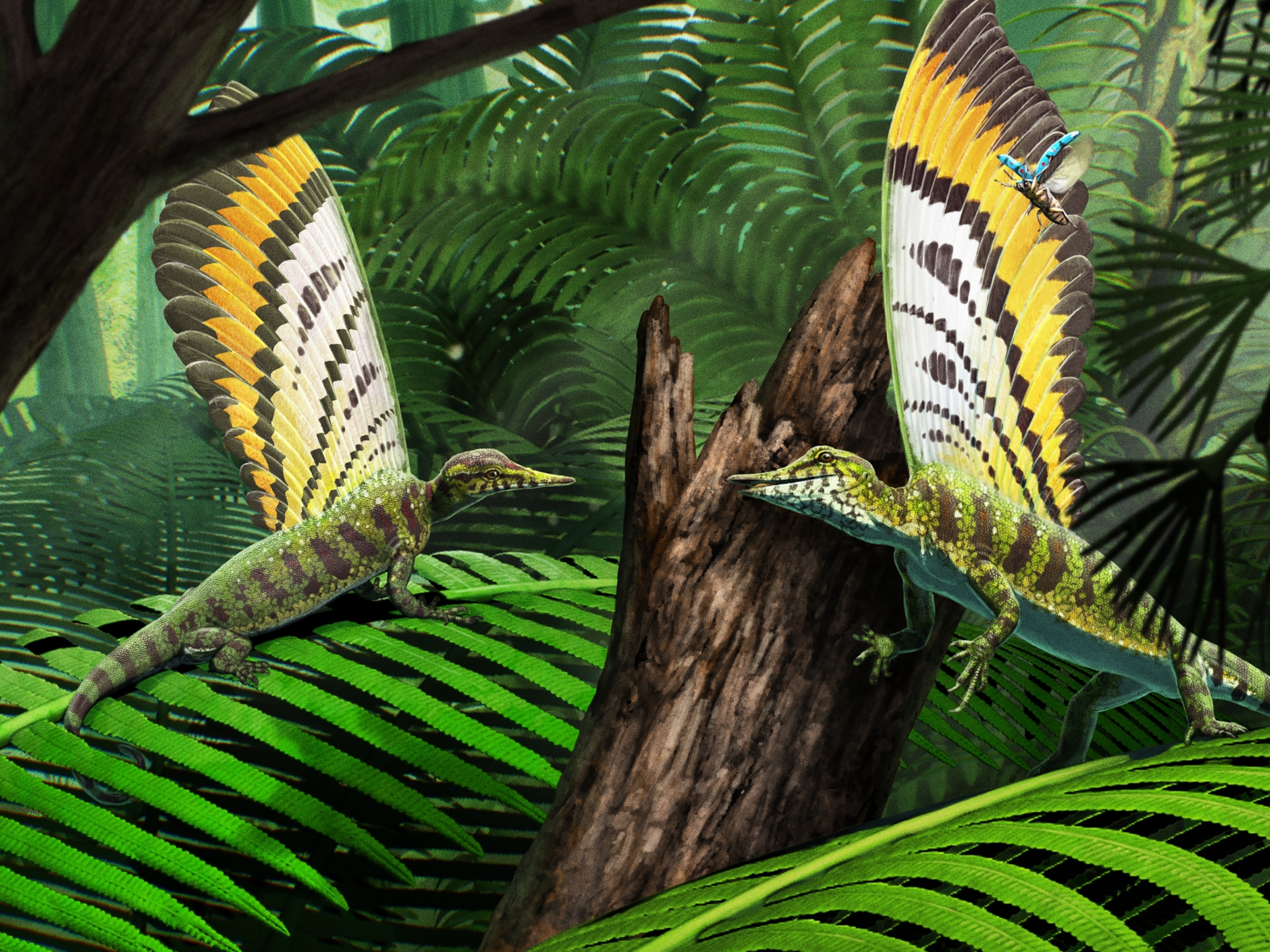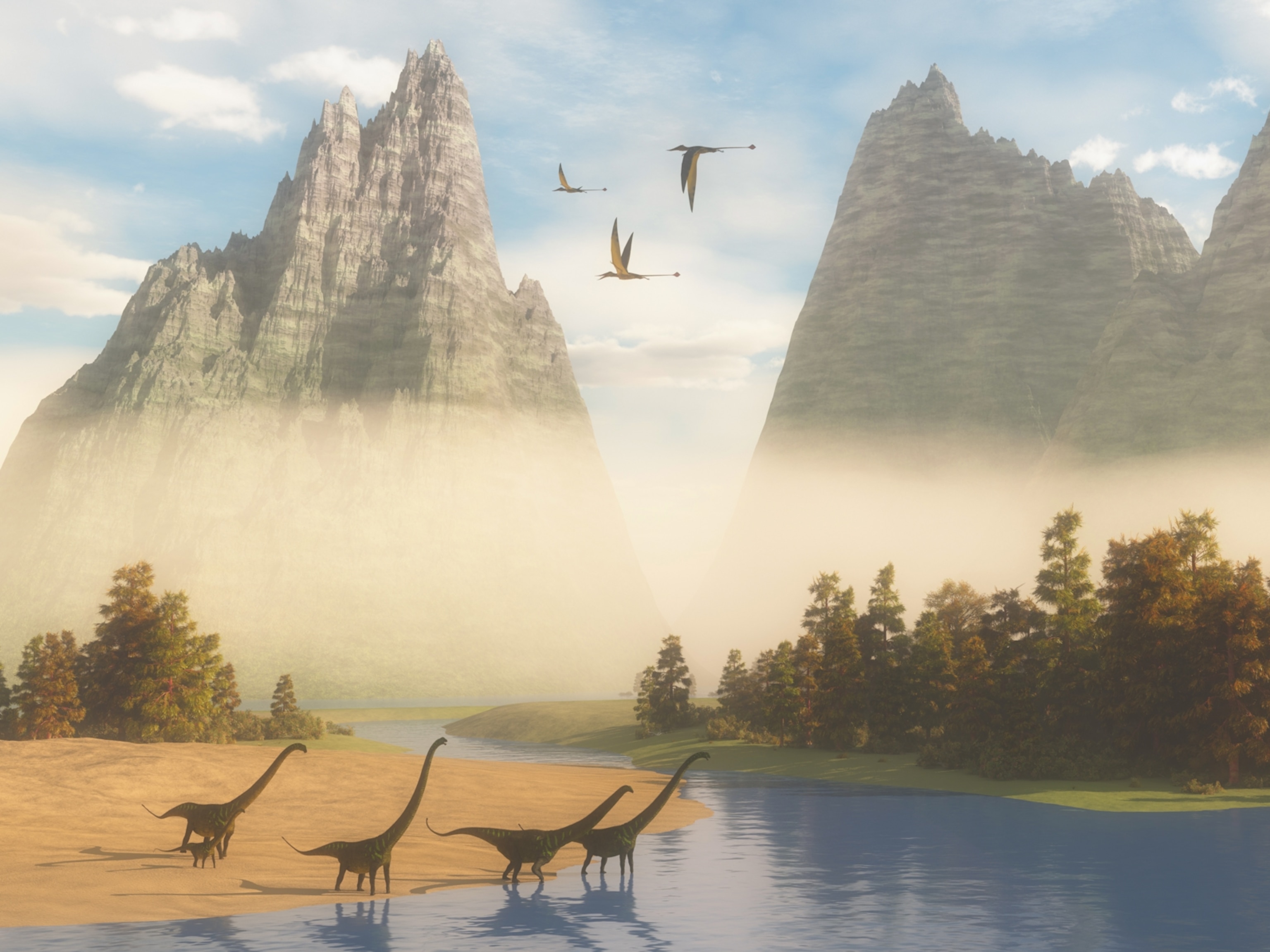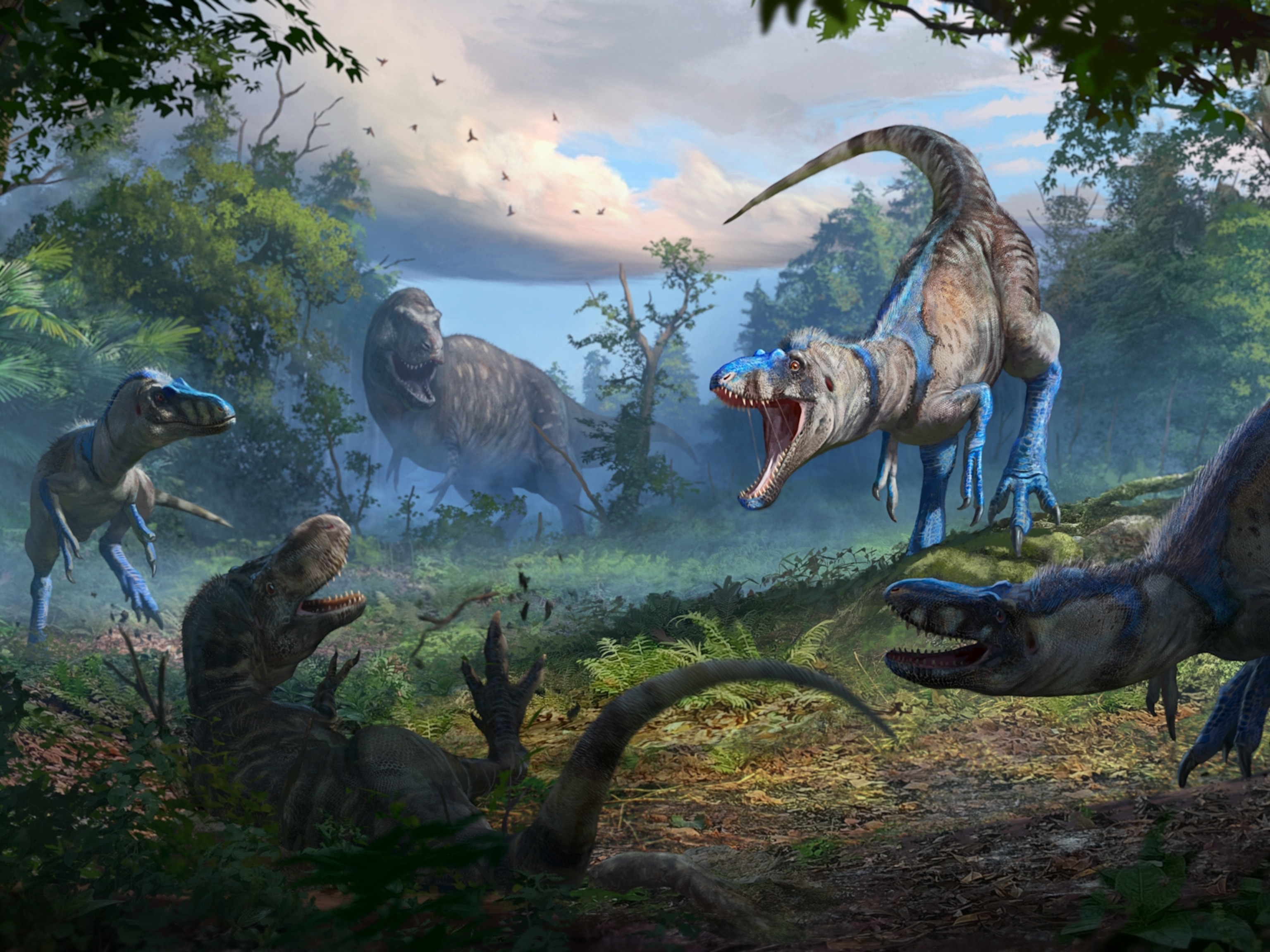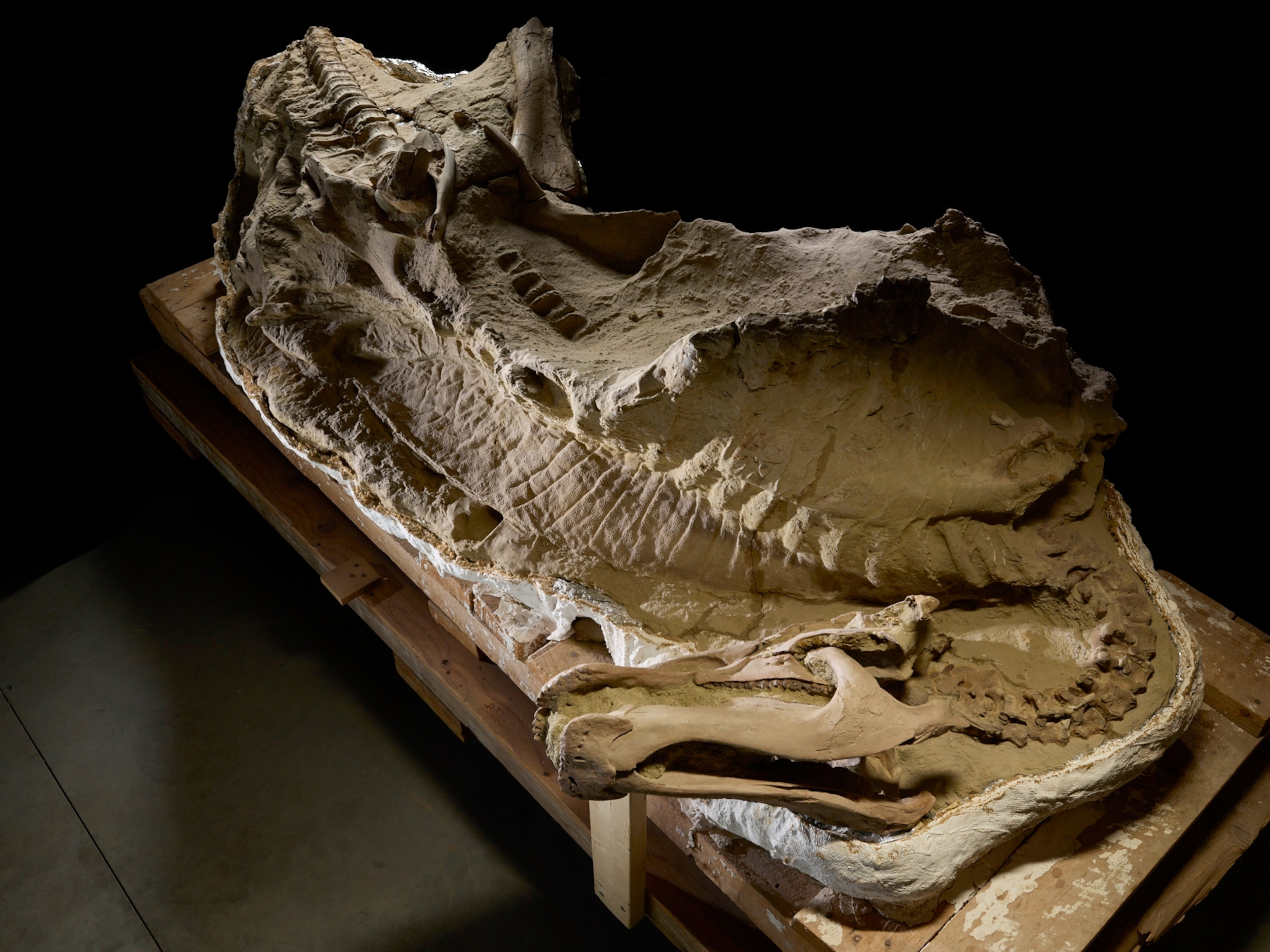
New 'Rainbow' Dinosaur May Have Sparkled Like a Hummingbird
The duck-size animal found in China had iridescent plumage all over its head and chest.
A new dinosaur discovered in China had feathers that may have glittered with the colors of the rainbow. Based on its stunningly preserved remains, scientists say the dinosaur’s head and chest seem to have been covered with iridescent feathers akin to those on modern hummingbirds.
The flashy display may have provided a social or sexual cue, like modern peacock tails. The dinosaur also has a bird-like body, including the sorts of feathers required for flight, but it has a crested head that more closely resembles that of a Velociraptor.
Given these traits, the ancient animal has been named Caihong juji—Mandarin for “rainbow with the big crest”—the team reports today in the journal Nature Communications.
Caihong lived in forests and may have glided from tree to tree, preying on small mammals and lizards, says study co-author Xing Xu, a paleontologist at the Chinese Academy of Sciences. In life, the duck-size carnivore would’ve weighed roughly a pound.
“I was shocked by its beautifully preserved feathers, even though I had seen many feathered dinosaur fossils previously,” adds Xu.
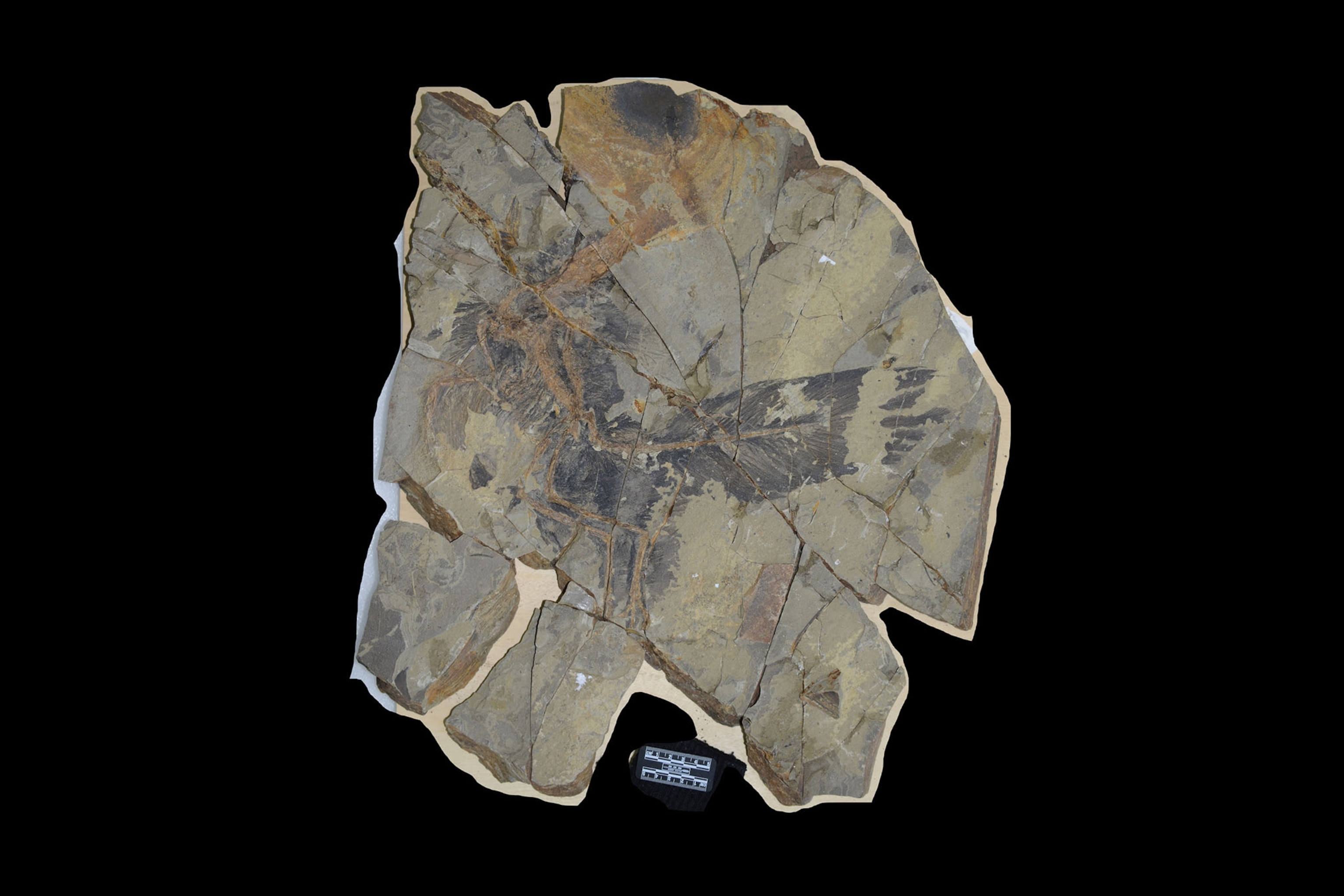
Rainbow in the Dark
Birds—the last living dinosaurs—use feathers today for flight, but feathers also help birds woo potential mates or jockey for social status. Dinosaur fossils suggest that feathers originally evolved for display, only later taking on the traits needed for flight. (Learn more about how feathers evolved.)
Like modern and ancient birds, dinosaurs likely had color vision and took advantage of it with striking, feathery displays. In exceptional cases, scientists can reveal dinosaur feathers’ original colors by finding vestiges of pigment sacs called melanosomes within fossilized plumes. (See the full-body coloration of the feathered dinosaur Anchiornis.)
Yang Jan, a local farmer, found the Caihong fossil in northeastern China’s Hebei Province. In February 2014, the Paleontological Museum of Liaoning acquired the fossil from Jan.
When scientists led by Dongyu Hu, a paleontologist at China’s Shenyang Normal University, examined the fossil, they found that its well-preserved remnants contained traces of pigment in its feathers. The team sampled 66 sites across the fossil, comparing the melanosomes they saw with melanosomes from modern bird feathers.
On Caihong’s head, chest, and parts of its tail, the researchers saw melanosomes that were long, flat, and organized into sheets. These patterns most closely match the melanosomes in the iridescent throat feathers of hummingbirds.
In hummingbirds, similar structures split light like a prism, creating a metallic sheen that changes color with the viewing angle. The team couldn’t reconstruct the dinosaur feathers’ exact colors, but they suspect that the observed pigments gave Caihong a rainbow glimmer.
Paleontologists have seen this sparkle in dinosaurs before. In 2012, scientists found evidence that the feathered dinosaur Microraptor glinted blue in the sun like modern crows and grackles. Unlike Caihong, though, Microraptor was iridescent all over—and it is much younger: Microraptor lived a full 40 million years after Caihong.
“When we put these data on the evolutionary tree, we recognize two different ways of creating iridescent color in small raptor dinosaurs before the origin of birds,” says Julia Clarke, a paleontologist at the University of Texas at Austin who coauthored the Caihong and Microraptor studies.
More Than a Light Show
Caihong may not have used just its feathers for showing off, notes University of Edinburgh paleontologist Steve Brusatte, who reviewed the study before publication.
“Its plumage was a shiny rainbow of iridescent colors … but it didn't stop there,” he says. “It also had a funky crest of bone sticking up in front of its eyes, which was probably a display structure as well.”
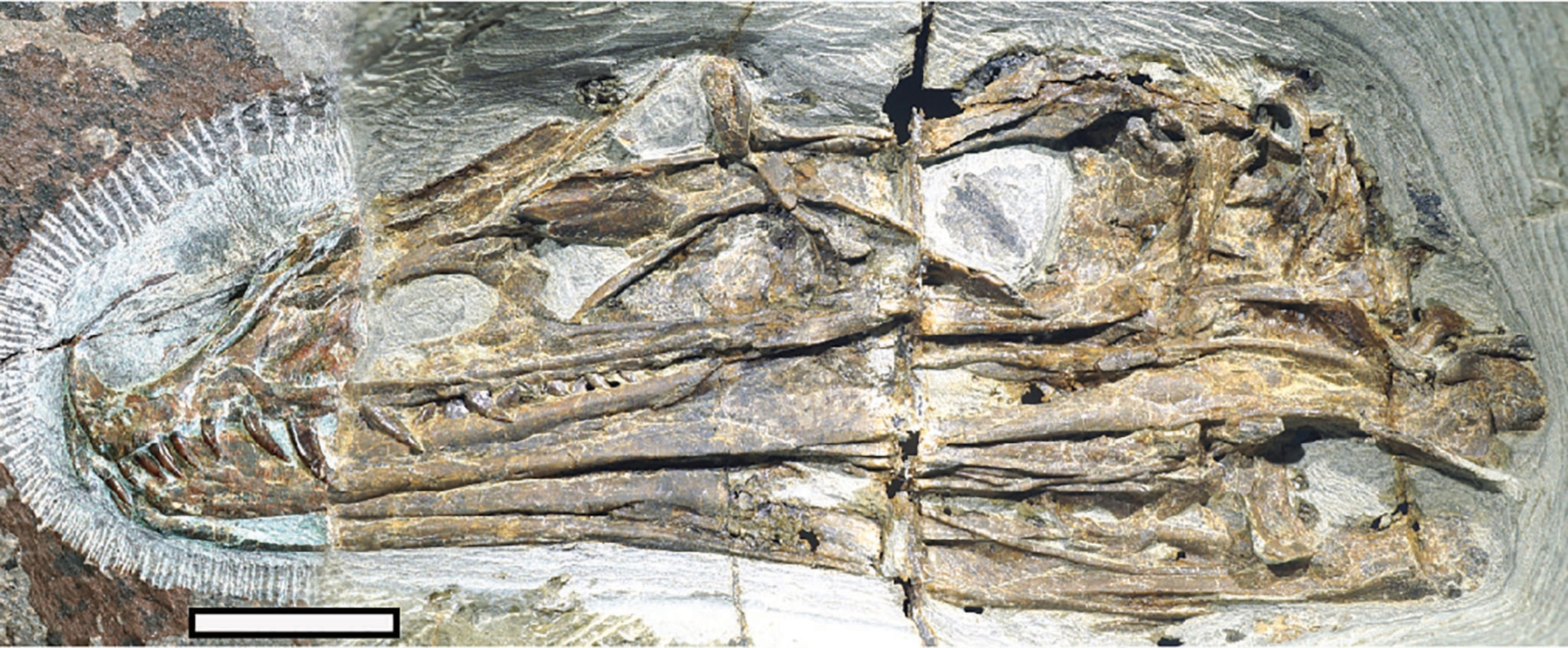
In addition, Xu says that Caihong’s frond-like tail has asymmetrical feathers, and their short, stiff leading edges would have borne the aerodynamic load of flight. Caihong is now the oldest known animal to have this key adaptation. The iconic bird-like dinosaur Archaeopteryx also has asymmetrical feathers, but it lived ten million years later.
With Caihong, “who knows what the functions of this large, wide tail were?” says National Geographic explorer Ryan Carney, a University of South Florida biologist who studies Archaeopteryx. “Perhaps it was held up as a dark background to provide contrast against the iridescent head during displays?”
Clarke, an expert on the origin of birds, says that researchers also can’t yet be sure how Caihong used its iridescent feathers, or whether males or females of the species had different plumage. For that, paleontologists can only hope for further study of the new fossil, and perhaps even more bones from Caihong and other feathered dinosaurs.
“The more feathered dinosaurs we find, the more we learn just how birdlike they were,” adds Brusatte. “We have to think of these animals as birds. If we were alive back then, that's [what] we would have considered them.”

